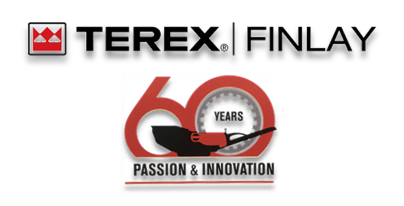Title Page
-
Dealer name
-
Machine Model
-
Serial number
-
Hour meter reading at inspection
-
Customer name & address
-
Location
-
Commissioning date
-
Feeding from
-
Material type
-
Feeding to
-
Mesh size (Top)
-
Mesh size (Middle)
-
Mesh size (Bottom)
Safety overview
-
Risk assessment completed before commencing customer handover
-
Walk around the machine and ensure there is space to fold out
-
Ensure any parts removed for transport are refitted
-
Explain the need for the customer to read and understand the operation manual and spare parts manual
-
Specifically ensure that the customer reads the Safety chapter of the operations manual
Pre-start
-
Explain to the customer the need for a pre-start every time and benefits of using a pre-check sheet:
-
Ensure all guards are fitted
-
That no damage has been done during transport / shipping damage
-
Identify wear components
-
Show maintenance schedules
-
Check that there are no loose parts or leaks
-
Check all lubricants and oils are at specified levels
-
Explain to the customer the benefit to keeping a log book with the machine so they can record:
-
Hours run
-
Location
-
Feed material
-
Damage
-
Mesh sizes
-
Condition of wear parts (skirts etc.)
-
Maintenance issues
-
Running records (engine load)
-
Running records (temperatures)
-
Point out to the customer all emergency stops around the machine
-
Identify to the customer the hydraulic components and their purpose around the plant
-
Identify to the customer the daily oil level checks
-
Diesel level and filler
-
Engine oil level and type used
-
Engine coolant level and type used
-
Hydraulic oil level and type used
-
Feeder gearbox oil level and type used
-
Urea level and where to fill
-
Greasing points around the machine
-
Track gearbox level and type used (not expected to be a daily check)
Navigating around the screens
-
Demonstrate and explain how to navigate around the control panel
-
Demonstrate and explain the alarm fault codes and warning lights - what to expect, how to find the history
Maintenance
-
Explain the importance of having a structured maintenance procedure and the benefits
-
Point out the position for locking off the machine and how and when to lock out and tag out
-
How to use the spare parts manual to identify part numbers and order through dealer
-
Show the customer the detailed maintenance schedule in the operations manual, for daily checks through to 2000 hours
-
Point out to the customer the locations of all maintenance related components
-
Engine oil, fuel filters and separators – location of dipstick
-
Hydraulic filters, return r filters and suction filters and how to change
-
Lube oil filters, levels, fill point
-
Tank breathers
-
Drain points
-
Explain to the customer how to tension and track / align product and all conveyor belts using adjusters and return rollers
-
Explain how to operate the screen tension rams and replace mesh
-
Explain to the customer how to check the drive belt tension and how to re-tension on screen box (if applicable)
-
Point out the ECM controller and the importance of these to be disconnected when welding (if applicable)
-
Explain to the customer how to tension the tracks and identify damage
-
(Tier 4 only) Give a brief overview on the urea system, tank, dosing unit, heating system, filter (if applicable)
Selecting a site position
-
Explain the need to prepare a firm / stable and level base
-
Failure to do so will cause uneven and premature wear of parts, etc.
Tracking into position
-
Explain and demonstrate how to select tracking, how to track and manoeuvre slow and fast with the remote control and/or umbilical
Folding out
-
Demonstrate how to prepare the screen unit for operation use.
-
Fold out and secure access ladders
Setting up
-
Explain and demonstrate how to control the feed of material to the screen box
Starting and running the machine
-
Explain and demonstrate how to start and operate the machine, explaining the sequence, the engine rpm, on the control panel
-
Demonstrate and explain the dust suppression system (if fitted)
-
Demonstrate any additional customer options (if fitted)
Shutting down the machine
-
Demonstrate and explain shutting down the machine in the correct sequence
Applications
-
Explain the need to keep the feed even spread across the screen area and maintain a steady flow
Additional comments and sign off
-
Were there any quality issues or unseen circumstances which affected your ability to commission the machine at the customer’s site?
-
Handover carried out by:
-
Person inducted
Person
-
Add signature
-
Date Handover carried out







